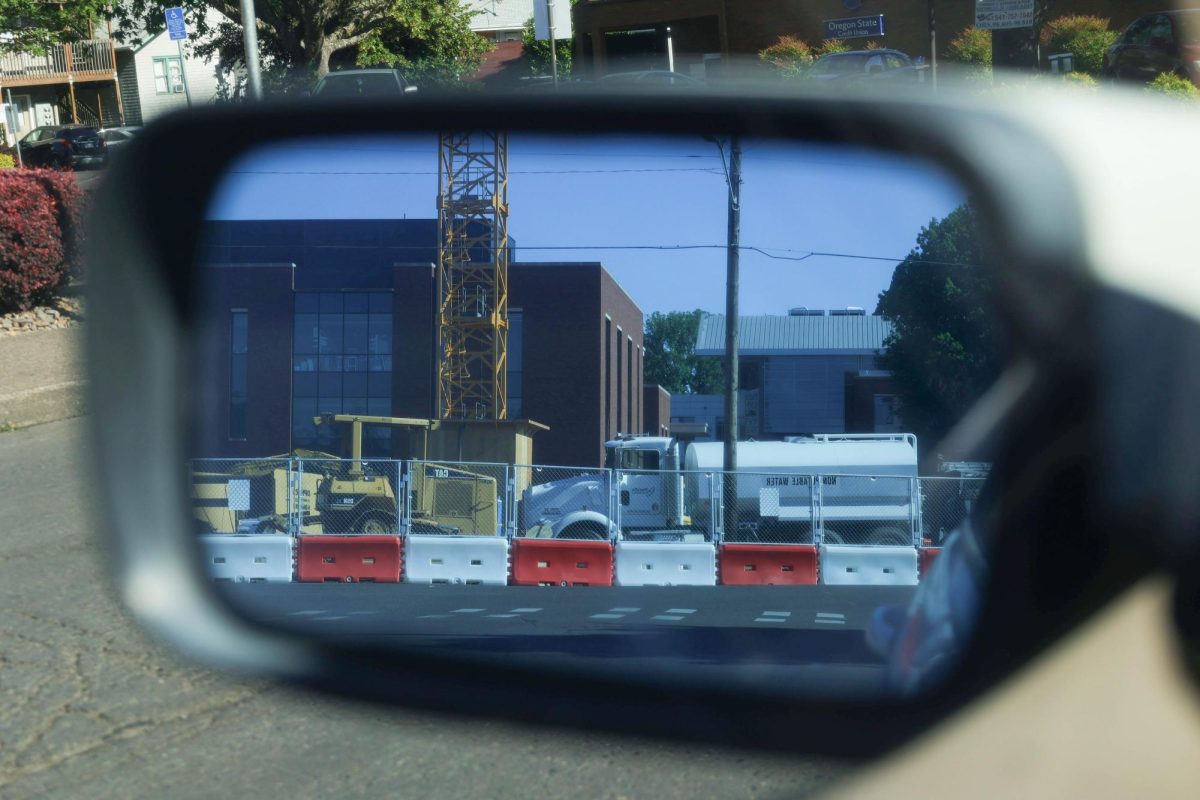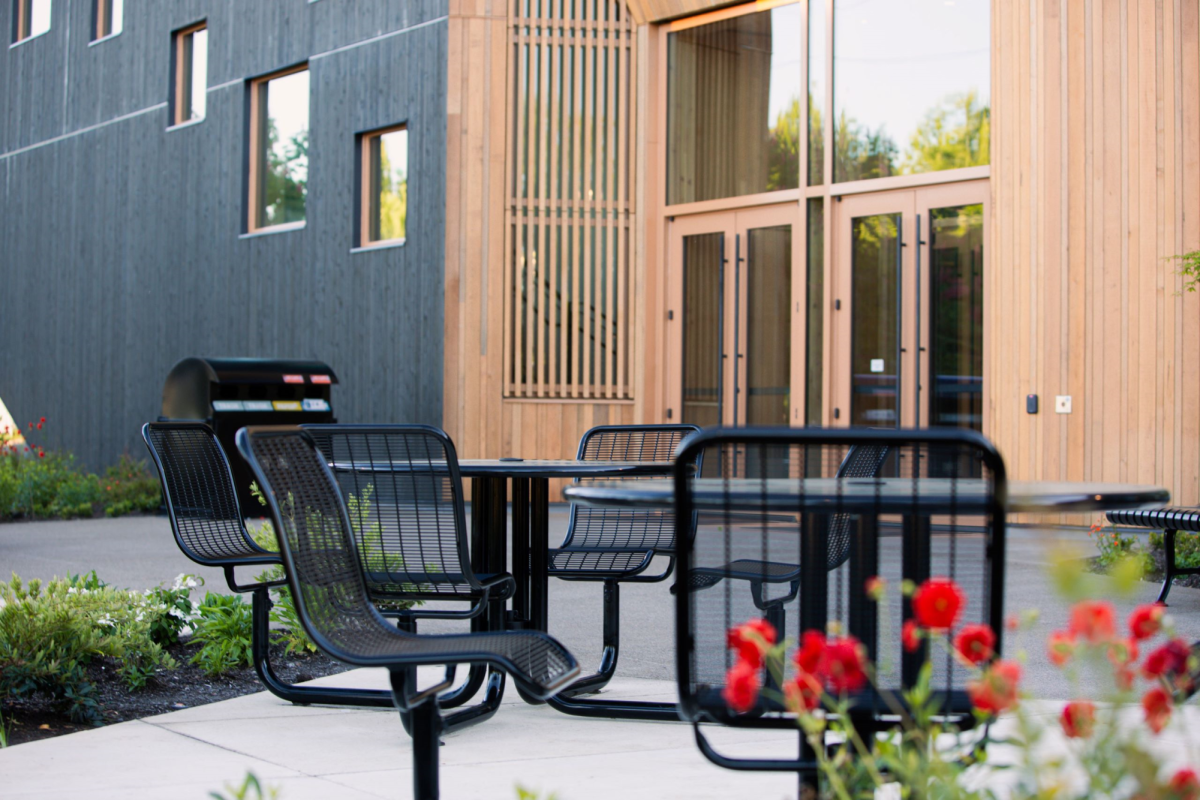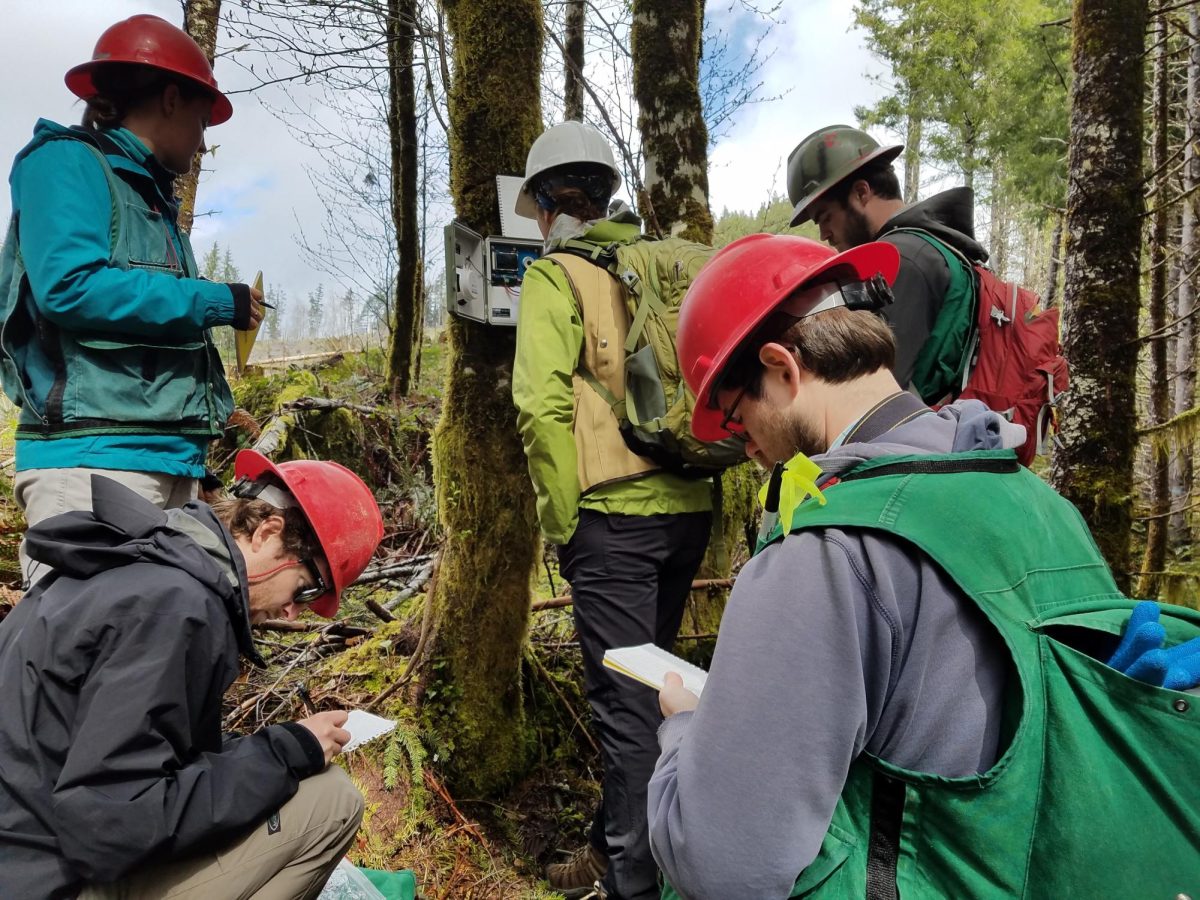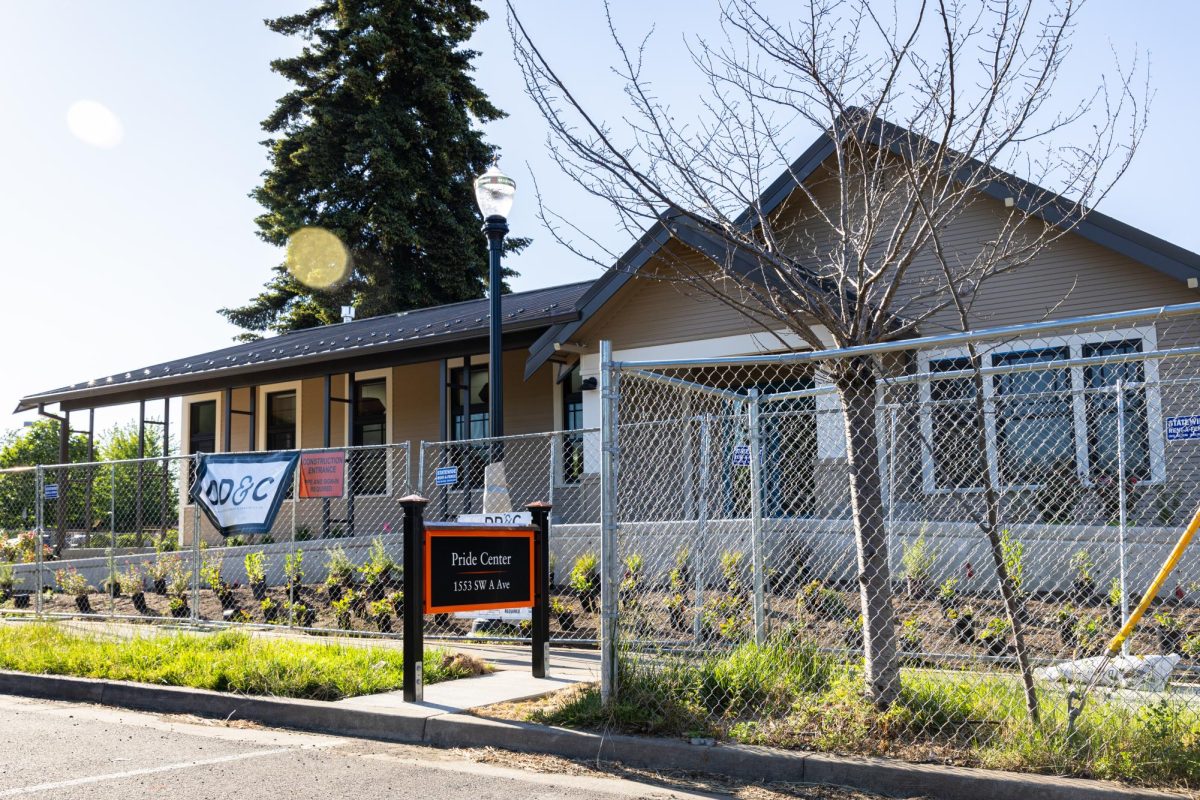Oregon State University’s forthcoming Collaborative Innovation Complex is set to open in 2026, with architects aiming to transform scientific research at the university.
The officially named Jen-Hsun Huang and Lori Mills Huang Collaborative Innovation Complex, located on the north side of campus bordering Monroe Ave., is designed to attract international researchers and students.
The $200 million complex owes its inception to the generous $50 million donation from Jen-Hsun Huang, NVIDIA founder and CEO, and his spouse, Lori Huang, both alumni of OSU.
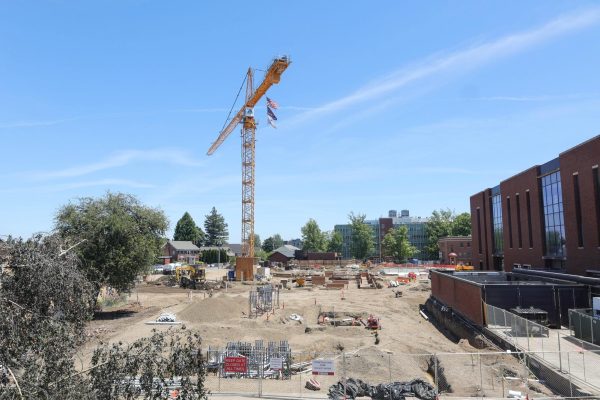
The complex will strive to become a global hub for interdisciplinary research and teaching, uniting faculty and students to address some of the world’s most complicated challenges. It will possess one of the nation’s most powerful supercomputers to tackle such problems.
“AI is the most transformative technology of our time,” said Jen-Hsun Huang and Lori Huang in an OSU press release. “To harness this force, engineering students need access to a supercomputer, a time machine, to accelerate their research.”
This supercomputer, equipped with NVIDIA CPUs, central processing units akin to the computer’s brain, and GPUs, graphics processing units that assist with tasks like image processing and machine learning, will bolster advanced research in artificial intelligence, robotics and materials science.
“This new AI supercomputer will enable OSU students and researchers to make very important advances in climate science, oceanography, materials science, robotics and other fields,” said Jen-Hsun Huang and Lori Huang in the OSU press release.
The facility will feature a state-of-the-art cleanroom, which is a controlled environment with very low levels of pollutants.
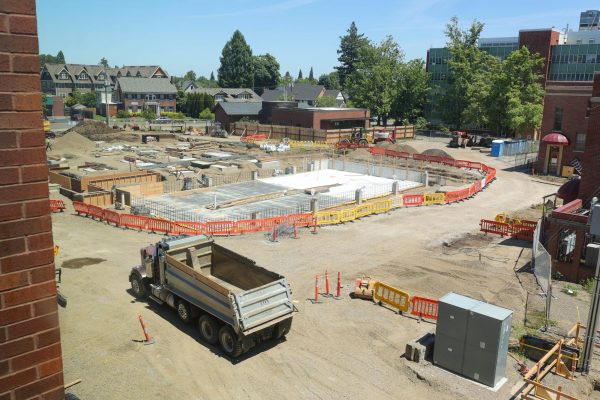
Additionally, it will include an electro-mechanical prototyping lab for sensor development, enabling the creation and testing of new sensors to detect environmental changes. Such sensors might be used in measuring data in oceans, lakes, forests and other natural habitats, while also helping to monitor endangered species.
The complex will also have a cyber-physical playground for advanced robotics, providing a space for human interaction with machines.
An extended reality theater will make use of high-resolution motion-capture technology with augmented reality, which projects digital information into the physical world.
The theater will enable imaging digital simulations. They will range from portraying the human body to demonstrating the design and operation of complex machines, such as how drones and robotics may function in society and the workplace.
Construction continues to progress with major milestones already achieved.
“The supercomputer concrete slab, foundation walls and footings have been poured,” said Erin Martin, director of communication and web for financial planning.
Work on “major utility infrastructure” started the week of June 17 on water lines and the electrical power grid, according to Martin.
“The groundbreaking ceremony was April 12, 2024, which included Jen-Hsun Huang and Lori Mills Huang, Governor Tina Kotek, along with other esteemed members of the community and OSU Leadership,” said Scott Bond, project manager for the CIC.
“The project budget is $200M and is paid from donor funds, state-paid bonds and OSU-paid bonds,” Martin said.
The contractor is aiming for completion in late 2026.
“With any construction project, there are factors that could impact construction, such as weather delays, supply chain issues and labor availability,” Bond said.
The building serves to enhance the competitiveness of Oregon’s semiconductor industry, a critical sector of the state’s economy. U.S. Senator Ron Wyden has voiced strong support for the project, recognizing its potential to drive technological innovation and economic growth.
“This state-of-the-art facility provides opportunity for Oregon State faculty and students to make generation-defining discoveries to push our tech industry forward. I am very excited for Oregon State to open this incredible facility and bring together the best and brightest to provide interdisciplinary solutions to complicated problems,” Wyden said.
Semiconductors are materials used to create computer chips, essential components in electronic devices. The CIC will assist in their development and research.
“The collaborative innovation complex will further enable OSU’s world-class researchers and facilities to address some of Oregon’s most pressing issues, including semiconductor research and development, climate change and public health,” said former Oregon governor Kate Brown.
Jen-Hsun Huang and Lori Huang are OSU alumni and “visionary philanthropists,” according to Shawn Scoville, CEO and president of the OSU Foundation.
“The Huang Foundation previously gave $5 million to build a laboratory for cancer research at Oregon State University,” Scoville said.
The complex is meant to embody the Huangs’ belief in the transformative power of AI and advanced computing to address global challenges.
“We discovered our love for computer science and engineering at OSU,” said Jen-Hsun Huang and Lori Huang in the OSU press release. “We hope this gift will help inspire future generations of students also to fall in love with technology and its capacity to change the world.”
As OSU continues to engage with the community and stakeholders, awareness campaigns and outreach initiatives are planned to highlight the significance of the project.
“There have been a number of outreach opportunities, including a capital project forum and videos featured on the Huang CIC website,” said Martin.
The university’s efforts to communicate the progress and potential of the complex aim to garner further support and enthusiasm from both within and outside the College of Engineering.
The Jen-Hsun Huang and Lori Mills Huang Collaborative Innovation Complex will seek to redefine the landscape of research and education at OSU, positioning the university as a leader in addressing some of the most challenging issues of our time.
“The complex will be an incredible contributor to our state and world by supporting innovation, entrepreneurship and partnerships with industry and other higher education institutions,” said Edward Feser, OSU provost and executive vice president.



